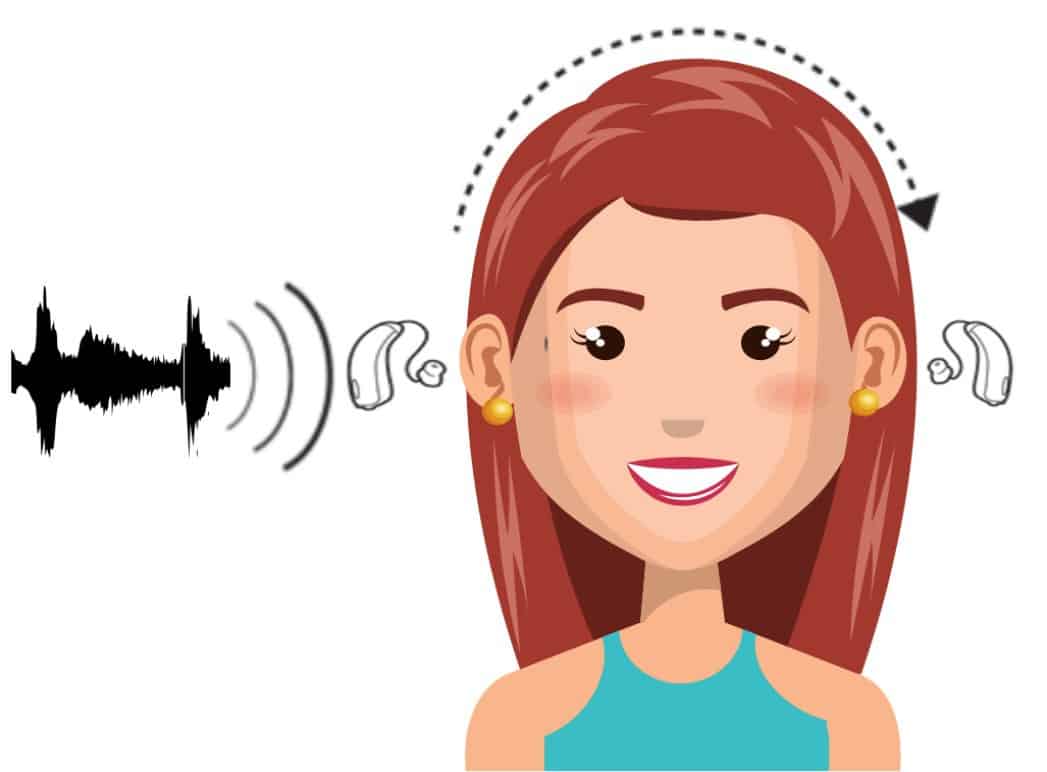If you hear poorly in one ear and cannot benefit from amplification in that ear, your audiologist may recommend a CROS or BiCROS hearing aid.
CROS stands for Contralateral Routing of Signals. In this setup, a transmitter on the poorer ear collects sound and sends it wirelessly to a receiver on the better ear. For patients with some hearing loss in the better ear, a BiCROS configuration is used—where both ears pick up sound and route it into the better ear with amplification.
Before purchasing, it’s important to understand the benefits, limitations, and alternatives to CROS hearing technology. Use this article to help you ask your audiologist informed questions.
Candidacy
CROS and BiCROS hearing aids are typically recommended when one ear has little to no benefit from amplification, while the other ear functions well. This situation is often termed single-sided deafness.
During a hearing evaluation, your audiologist will test speech recognition and pure-tone thresholds. If one ear has poor speech understanding and the other performs well, CROS/BiCROS may be recommended. For best outcomes, the better ear should have near-normal hearing for a CROS to work well; otherwise, a BiCROS setup may be more appropriate.
Patients with dexterity issues or cognitive impairment may struggle with managing CROS systems. Read more on adjusting to hearing aids.
Causes and Effects of Unilateral Hearing Loss
Unilateral hearing loss affects approximately 7% of adults and 3% of school-aged children. Common causes include:
- Congenital conditions
- Genetic disorders
- Neurological syndromes
- Acoustic neuromas or other tumors
- Nerve damage from surgery
- Head trauma
- Severe infections
- Noise trauma (e.g., blast injury)
People with unilateral hearing loss struggle with speech in noise and sound localization. Studies show that they need a 13 dB better signal-to-noise ratio (SNR) to match normal-hearing listeners.
In children, unmanaged single-sided deafness can impact learning. Educational support and awareness are critical. Learn more in our article on hearing loss in children.
Advantages and Disadvantages of CROS Hearing Aids
About half of users continue with CROS hearing aids after the trial period. The primary benefit is overcoming the “head shadow effect,” which reduces sounds arriving from the poorer side, especially above 2000 Hz, which are crucial for speech clarity.
CROS can help you hear someone speaking on your poorer side and improve spatial awareness. However, it doesn’t restore natural sound localization or binaural processing—skills the brain uses to process sound from both ears.
Best CROS Hearing Aids in 2025
The best modern CROS and BiCROS hearing aids offer wireless transmission and advanced sound processing:
- Phonak Infinio – Exceptional wireless streaming, intelligent sound classification, and robust app support. Learn more in our review of Phonak hearing aids.
- Starkey Genesis AI / Edge AI – Known for edge mode and environment-based automatic adjustments.
- Oticon Intent – Uses deep neural network processing and sensor-driven decision making. See our Oticon Intent review.
Regardless of brand, audiologist experience is critical to proper programming and benefit.
Styles and Features
Most CROS devices come in behind-the-ear (BTE) or in-the-ear (ITE) styles. The transmitter typically includes a microphone but no speaker, while the receiver includes the speaker for your better ear. BiCROS has microphones on both sides and sends the combined sound into the better ear.
Your audiologist will choose dome or earmold types based on your anatomy and hearing thresholds. Learn more about domes and earmold options here.
Special Considerations in Fitting
CROS users may notice circuit noise or unnatural sound. Some experience the occlusion effect, especially with a closed receiver in their better ear. A skilled audiologist can minimize these issues by adjusting gain and mix levels.
You may benefit from having programs to adjust the mic mix. Also, request the option to manually disable the transmitter in noisy environments where it might pick up unwanted sound. A hearing aid app can assist with this if dexterity is a concern.
Alternatives to CROS Hearing Aids
Other options include:
- Traditional hearing aid: May help with environmental awareness, though speech clarity may be limited.
- Transcranial CROS: A powerful hearing aid in the poorer ear sends sound through bone conduction to the good ear.
- Baha (Bone Anchored Hearing Aid): A surgically implanted device with an external sound processor. Learn more at the Cochlear website.
Frequently Asked Questions
Does insurance cover CROS hearing aids? Traditional Medicare does not cover hearing aids. However, Medicare Advantage, Medicaid, and private insurance may offer partial or full coverage. Some states mandate coverage for children. Ask your audiologist about payment options.
What’s the best CROS hearing aid? Top options include Phonak Infinio, Starkey Edge AI, and Oticon Intent. Choose based on your audiologist’s recommendation and the hearing aid features that best fit your lifestyle. See our background noise comparison guide.
Can I stream music or calls with CROS? Some modern CROS systems support Bluetooth streaming, though functionality may vary depending on the model and smartphone compatibility. Ask your audiologist if your model supports it.

